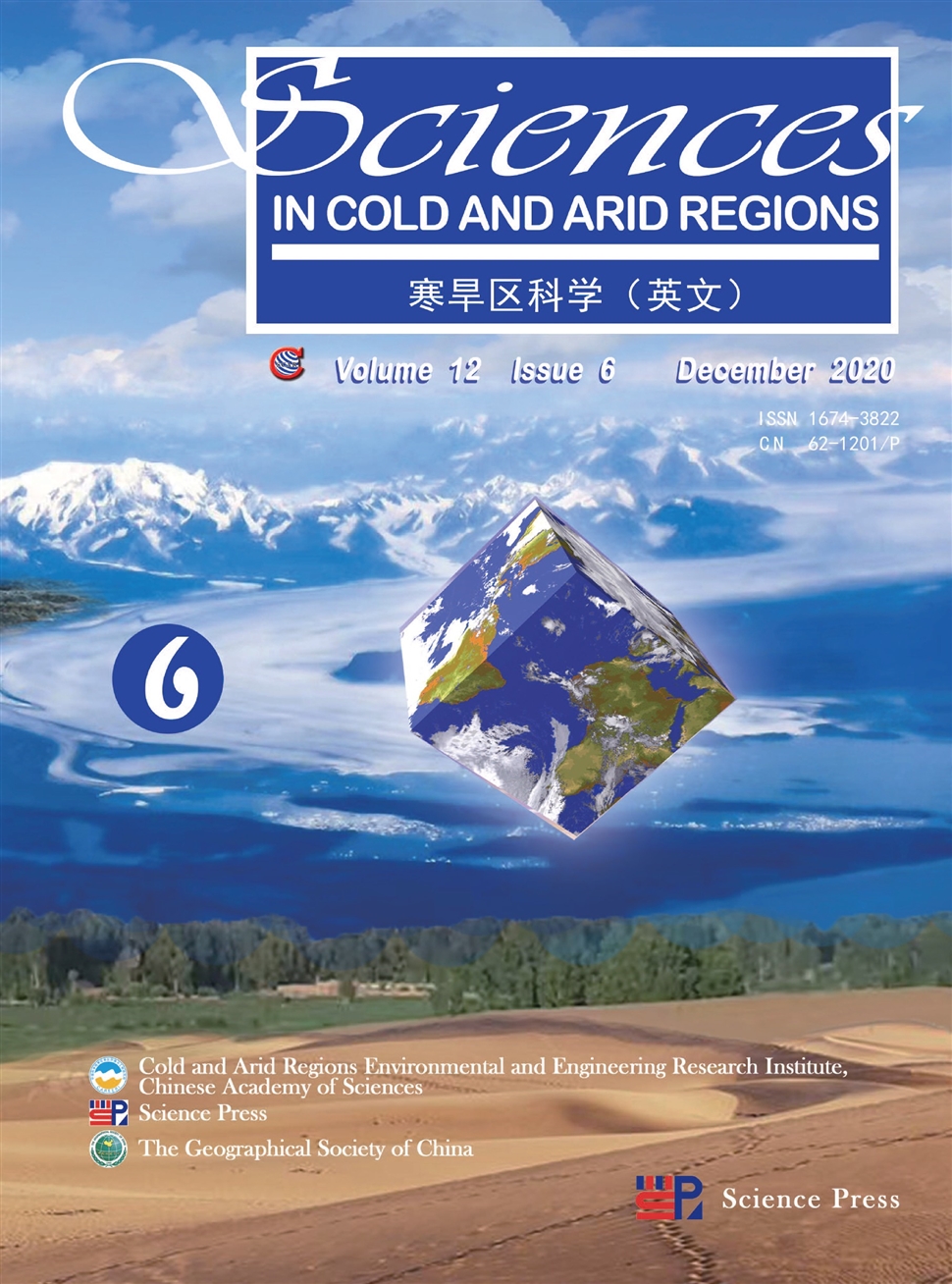Effect of debris on seasonal ice melt (2016−2018) on Ponkar Glacier, Manang, Nepal
作者:Reeju Shrestha,Rijan B.Kayastha,Rakesh Kayastha
摘要:Supraglacial debris is widely present on glaciers in alpine environments and its distribution greatly affects glacier melt.The present study aims to determine the effect of debris on glacier ice melt on Ponkar Glacier,Manang District,Nepal.We estimated ice melt under various debris thickness using Energy Balance(EB)model and conductive heat flux methods,which are compared with in-situ observations.Four stakes are installed on the glacier at different debris thickness of 11−40 cm.Meteorological data from March 2016 to May 2018 are obtained from the Automatic Weather Station(AWS)installed on the glacier surface at an elevation of 3,881 m a.s.l.for the energy balance calculation.Debris surface temperature and different debris depths are also measured on the glacier.The calculated ablation rates from the conductive heat flux method are 0.9,1.62 and 0.41 cm/d on pre-monsoon,monsoon and post-monsoon,respectively,with mean debris thermal conductivity 1.04 W/(m∙K).The net radiation shows little variation between the seasons,while turbulent heat flux varies in the season.Sensible heat flux was found to be highest in post-monsoon season due to a larger temperature gradient between surface and air.
发文机构:Himalayan Cryosphere
关键词:debris-coveredglacierthermalconductivityenergyfluxPonkarGlaciericemeltHindu-KushHimalaya
分类号: TG1[金属学及工艺—金属学]
- Soil hydraulic conductivity and its influence on soil moisture simulations in the source region of the Yellow River―take Maqu as an example
- The 2018 Academic annual meeting of China Society of Cryospheric Science was held successfully in Foshan on November 17–18,2018
- A paleo-hydrological simulation experiment and its verification in an inland basin
- Variation in water source of sand-binding vegetation across a chronosequence of artificial desert revegetation in Northwest China
- 60-year changes and mechanisms of Urumqi Glacier No.1 in the eastern Tianshan of China,Central Asia
- Seed germination and seedling growth of Pycnanthus angolensis(Welw.)Warb.,African false nutmeg
- Origin and advances in implementing blowing-snow effects in the Community Land Model
- Estimating interaction between surface water and groundwater in a permafrost region of the northern Tibetan Plateau using heat tracing method
- Cryosphere evapotranspiration in the Tibetan Plateau:A review
- Fast genetic mapping in barley:case studies of cuticle mutants using RNA-sequencing


